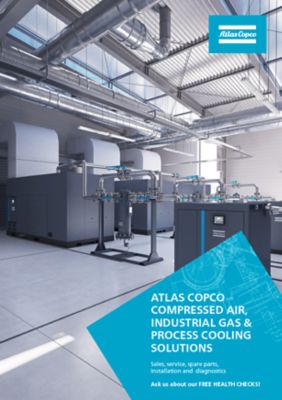The importance of correct PET air compressor sizing
When it comes to industrial compressed air equipment for your bottling plant, the proper PET compressor sizing is crucial. That’s because compressing air takes a lot of energy.
In fact, over its lifetime, you will spend more money on electricity than on the air compressor itself. If you use a model that is too large, you will waste a lot of energy and money. You can also run into reliability issues. If the air compressor is too small, its performance will suffer, and you risk not having enough high-pressure air available to meet your demand.
Compressor selection and sizing is even more important for the operators of PET bottle production plants. You need a correctly sized PET bottle blowing compressor. You also need a booster that turns low- and medium-pressure air into the high-pressure air required for the PET blow molding machine.
Pressure and flow are the key to PET compressor sizing
But how to set up an air compressor for a PET plant and size it and the corresponding booster?
For the PET air compressor setup, it all hinges on knowing your flow and pressure requirements.
In this case, pressure means the amount of force that is needed to perform a certain task at any given point in time. This pressure is measured in pounds per square inch (psi) or bar (metric measure of pressure).
It typically takes 6-7 bar to operate most compressed air equipment. You need a lot more pressure for the industrial PET blow molding machines in a bottle production plant. 28 bar is a common bottle blowing requirement, although the blowing pressure range can vary from 18 bar to as high as 40 bar.
Generally, you want to keep the pressure as low as possible to keep your energy expenses in check. For example, you can reduce your energy use by 8 percent if you use 6 bar instead of 7 bar for an application. That means one less bar of pressure can make a big difference in your electric bill.
Understanding the flow requirements for PET bottle blowing compressors
Flow, on the other hand, refers to a compressed air product's ability to continue performing a task in a given time. Also referred to as free air delivery, it is measured in cubic feet per minute (cfm), liters per second (l/s) or cubic meters per hour (m3/h).
For your low- or medium-pressure compressor, you need to know the number and air demand of your standard pneumatic applications and high-pressure machines. For your booster, the flow requirement is determined by the number of PET bottle blowing machines and how many bottles they need to produce.
So, how do you determine the required flow and get your PET compressor sizing right? One way is to consult compressor specification tables.
Sounds simple, right? Well, not so fast…
The complicated science of PET air compressor sizing
Yes, it is possible for a non-expert to come up with a “back-of-the-envelope” calculation that will lead to the approximate size of a compressor. However, in many cases, that will still lead to a lot of wasted energy or a compressed air system that hampers the production processes.
That’s because there are a lot of other variables that PET bottle manufacturers must factor in when calculating the necessary air pressure and flow. For example, your PET bottles alone influence the required pressure in three different ways.
First, the material and the wall thickness of the bottle, then its shape (unusual shapes with edges require more pressure) and its size.
Common mistakes made when sizing PET bottle blowing compressors
Here are some of the common air compressor sizing mistakes:
· Misunderstanding flow characteristics and requirements
· Not looking at the compressed air system as a whole and instead viewing each piece of equipment separately
· Oversizing the compressor “just to make sure”, even if that is unnecessary and results in additional costs
· Basing calculations on suboptimal equipment, e.g. compressors that experience flow losses over time or units that cannot operate continuously without needing to cool down
In addition, a compressed air expert will take into account the ambient conditions at the location where the compressor and booster are set up. For example, all of these factors can affect that size of the compressed air equipment you need:
- Elevation above sea level
- Ambient pressure
- Ambient temperature
- Humidity
- Cooling system
- Compressor type
- Electrical infrastructure
The right compressed air partner
Fortunately, there is a simple solution to getting the sizing of the compressor and booster for your PET bottle production right. Work with the right air compressor setup expert from the start.
Let us know your complete air requirements, we can perform the complicated calculation with all of the aforementioned variables.
Read more on PET by clicking the articles below

